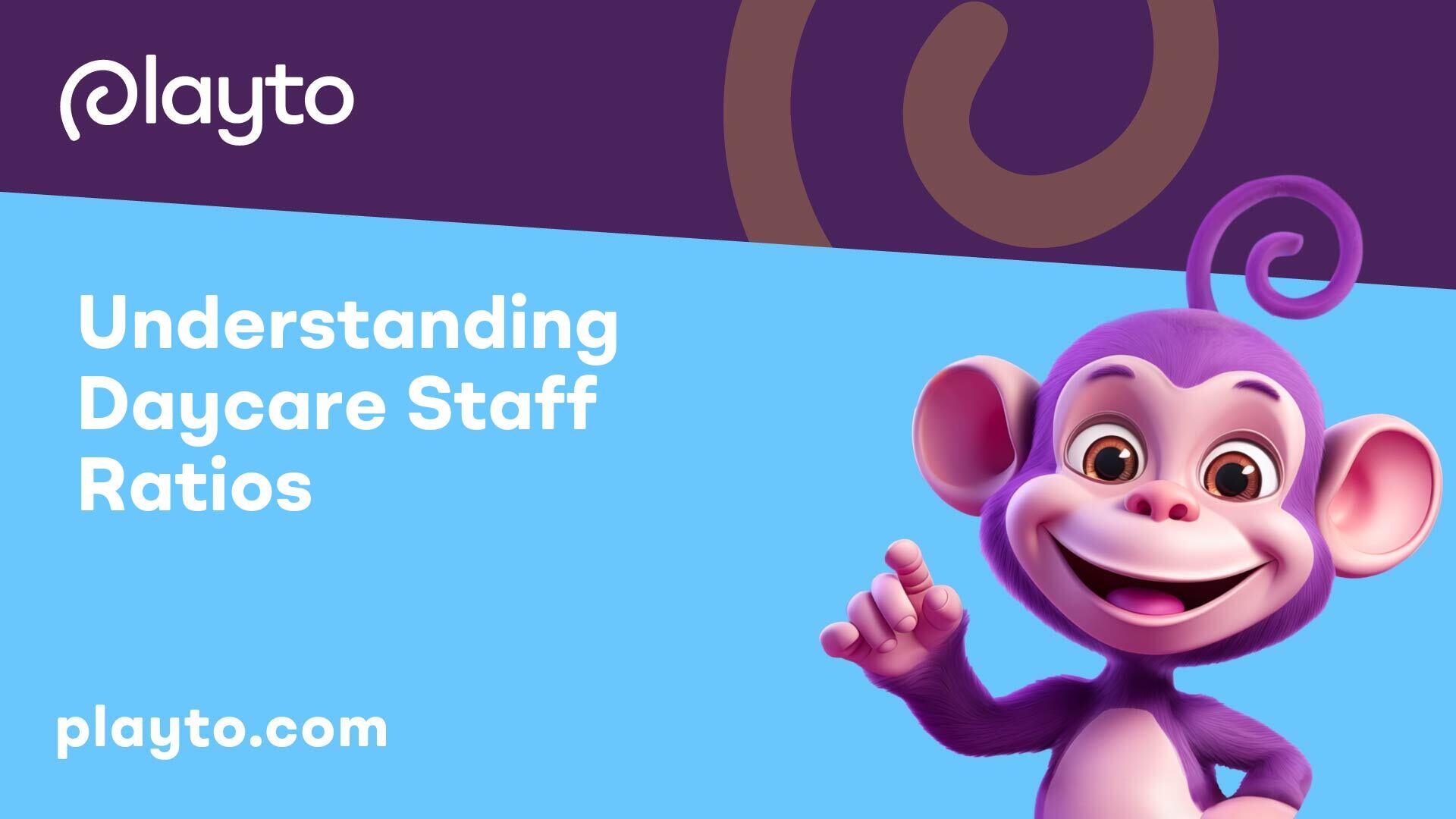
Understanding Daycare Staff Ratios
In the realm of daycare settings, comprehending the significance of staff ratios is paramount for ensuring the safety and well-being of children. These ratios not only impact the quality of care provided but also play a crucial role in the development of children's social and cognitive skills.
Importance of Staff Ratios
Federal law mandates that states and territories establish standards for child group sizes and staff-to-child ratios in childcare settings to safeguard children's safety, well-being, and development. Lower staff-to-child ratios and smaller group sizes in daycare settings lead to better supervision, personalized attention, and increased opportunities for children to develop social skills through consistent interactions within a smaller group [1].
Variability Across States
State-specific regulations dictate the staff-to-child ratio and group size requirements in daycare settings. These standards vary depending on the type of program, with recommendations from early childhood experts offered to ensure safe ratios and group sizes at daycare centers and family child care homes [1]. Education researchers emphasize that staff-to-child ratios significantly influence the overall quality and educational outcomes in childcare facilities. Consequently, laws addressing staff-to-child ratios have been established in all 50 states to uphold child safety and well-being.
Understanding the nuances of staff ratios in daycare environments is crucial for maintaining a nurturing and developmentally appropriate setting for children. By adhering to the recommended staff-to-child ratios and group sizes, daycare providers can create a safe and enriching space where children can thrive and grow socially and academically.

Requirements for Child Group Sizes
Ensuring appropriate child group sizes and staff-to-child ratios are critical aspects of maintaining quality care in daycare settings. Federal regulations and state-specific guidelines play a significant role in defining these requirements to safeguard the well-being and development of children.
Federal Regulations
Federal law mandates that states and territories establish standards for child group sizes and staff-to-child ratios in childcare settings to prioritize children's safety, well-being, and growth. These regulations act as a framework to ensure consistent quality across daycare centers and family child care homes nationwide.
For accurate information on federal regulations pertaining to child group sizes and staff-to-child ratios, individuals should refer to official government resources such as the Department of Health and Human Services or the Office of Child Care. These resources provide detailed guidelines to support the implementation of best practices in childcare settings.
State-Specific Guidelines
The requirements for child group sizes and staff-to-child ratios in daycare facilities vary by state and program type. Each state has the authority to establish its own guidelines tailored to the needs of the local community and the developmental needs of children.
It is essential for daycare providers and educators to be well-versed in their state's specific regulations to ensure compliance and the delivery of high-quality care. State-specific guidelines offer detailed insights into the recommended staff-to-child ratios and group sizes for different age groups and settings, enabling daycare centers and family child care homes to create nurturing environments that support children's development.
By adhering to both federal regulations and state-specific guidelines regarding child group sizes and staff-to-child ratios, daycare providers can uphold the standards necessary to promote a safe, engaging, and developmentally enriching experience for children under their care. These regulations serve as a foundation for maintaining a high standard of care and supporting positive outcomes for children in daycare settings.

Staff-to-Child Ratios in Different Programs
When it comes to childcare settings, such as DayCare Programs, the staff-to-child ratio plays a crucial role in ensuring the safety and quality of care provided. In this section, we will explore the staff-to-child ratios in two common childcare settings: Family Child Care Homes and Daycare Centers.
Family Child Care Homes
Family Child Care Homes typically provide care in a more intimate setting, often in the caregiver's own residence. In such settings, it is important to maintain appropriate staff-to-child ratios to ensure individualized attention and supervision.
According to Childcare.gov, family child care home programs should adhere to a maximum staff-to-child ratio of 1:6. This means that for every caregiver, there should be no more than six children under their care. Additionally, in mixed-age groups that include infants and toddlers, it is recommended to maintain a staff-to-child ratio of 1:6, with no more than two children being 24 months or younger.
Ensuring the proper staff-to-child ratio in Family Child Care Homes is essential for fostering a nurturing and supportive environment where each child receives the attention they need to thrive. This personalized approach helps in building strong relationships, promoting learning, and ensuring the safety of all children under care.
Daycare Centers
Daycare Centers, on the other hand, cater to larger groups of children and may have more structured programs and facilities. The staff-to-child ratio in daycare centers is designed to meet the needs of a larger number of children while still providing personalized care and attention.
In daycare centers, the staff-to-child ratio may vary depending on state regulations and the age of the children. However, a common guideline is to have a lower ratio for younger children to ensure adequate supervision and care.
In general, daycare centers strive to maintain a balanced staff-to-child ratio to promote individualized attention, facilitate learning and development, and ensure the safety and well-being of all children in their care. By adhering to these ratios, daycare centers can create a nurturing and enriching environment where children can learn, play, and grow under the guidance of qualified caregivers.
Recommendations from Experts
In the realm of daycare, early childhood guidelines play a crucial role in setting standards for staff-to-child ratios and group sizes. These guidelines are informed by research and expert recommendations to ensure the well-being and development of children in daycare settings. Adhering to these guidelines is essential for providing a safe and nurturing environment for young children.
Moreover, experts stress the importance of personalized attention in daycare settings. Lower staff-to-child ratios and smaller group sizes allow for more individualized care and interaction, enabling caregivers to focus on each child's specific needs and developmental milestones. This personalized attention fosters a sense of security, trust, and attachment between children and their caregivers, laying a solid foundation for social and emotional growth.
By following early childhood guidelines and emphasizing personalized attention, daycare providers can create an environment where children thrive and develop essential skills at their own pace. These recommendations from experts underscore the significance of tailored care and attentive interactions in promoting holistic development in daycare settings.
Significance of Low Ratios
In the realm of daycare, the significance of maintaining low staff-to-child ratios cannot be overstated. Lower ratios play a crucial role in ensuring better supervision and fostering social skills development in young children who are under the care of daycare providers.
Better Supervision
Maintaining low staff-to-child ratios allows for more effective and attentive supervision of each child in a daycare setting. With fewer children to oversee, caregivers can dedicate more time and attention to understanding and meeting the individual needs of each child. This personalized approach not only enhances safety but also promotes a nurturing environment where children feel secure and supported.
According to Childcare.gov, smaller group sizes and lower staff-to-child ratios facilitate more meaningful interactions between caregivers and children, fostering trust and creating opportunities for positive social-emotional growth.
Social Skills Development
An additional benefit of low staff-to-child ratios is the positive impact on social skills development. By interacting consistently with a smaller group of children and staff, children have more opportunities to practice and refine their social skills, such as empathy, cooperation, and communication.
Research highlighted by Brightwheel emphasizes that optimal staff-to-child ratios in daycare environments contribute to fostering meaningful interactions that are essential for social-emotional development. Through these interactions, children learn to navigate social situations, build relationships, and develop the necessary skills for effective communication and collaboration.
Moreover, as noted by Brightwheel, lower ratios enable children to receive more individual attention, which is pivotal for their social growth. This personalized approach not only enhances social skills but also instills confidence and a sense of belonging in children, setting a strong foundation for their future interpersonal relationships.
In essence, low staff-to-child ratios in daycare settings not only benefit the children in their care but also create a healthier environment for teachers, reducing stress and ensuring a more positive learning experience for all involved. By prioritizing low ratios, daycare facilities can provide a nurturing and enriching environment that supports the holistic development of young children.
Quality Rating Systems
In the realm of early childhood education and care (ECEC), Quality Rating and Improvement Systems (QRIS) play a pivotal role in assessing and enhancing the quality of daycare programs. These systems consider child-staff ratios as a fundamental quality indicator, emphasizing the significance of maintaining appropriate ratios for optimal care and education outcomes.
QRIS Involvement
In North America, QRIS incorporate child-staff ratios as a key component in their evaluations of daycare programs. These systems aim to standardize quality assessments across ECEC settings and provide guidelines for improving program quality. By including child-staff ratios in their assessments, QRIS acknowledge the critical role that ratios play in ensuring high-quality care for young children [3].
Impact on Child Outcomes
The relationship between child-staff ratios and child outcomes in ECEC settings has been a topic of interest in research studies. Findings from a systematic review of 29 studies revealed mixed results regarding the impact of child-staff ratios on children's developmental outcomes, including cognitive, language, and social-emotional development. Some studies suggested that better child-staff ratios were associated with improved child outcomes, while others did not find significant correlations or reported varied results.
The variability in research findings underscores the complexity of the factors influencing child development in daycare settings. While child-staff ratios are recognized as a key quality indicator in QRIS evaluations, the direct causal relationship between ratios and child outcomes remains a topic of ongoing investigation and discussion within the ECEC community.
Exploring the role of QRIS in assessing daycare quality and the impact of child-staff ratios on child outcomes provides valuable insights into the efforts to enhance the quality of ECEC programs. By considering these aspects, daycare providers, policymakers, and parents can make informed decisions that prioritize the well-being and development of young children in daycare settings.
Research Findings
In the realm of daycare, research plays a crucial role in understanding the impact of various factors on child development. When it comes to exploring associations with child development in daycare settings, several studies have been conducted to investigate the relationship between child-staff ratios and children's outcomes.
Associations with Child Development
Research studies, including those reviewed by the National Center for Biotechnology Information (NCBI), have delved into different domains such as cognitive, language, social-emotional, and physical outcomes in relation to child-staff ratios in daycare settings. Surprisingly, the majority of reported results have shown no significant link between child-staff ratios and children's developmental outcomes. These findings suggest that variations in child-staff ratios within the observed range may not significantly impact children's development in areas like cognitive abilities, language skills, and social-emotional growth.
Systematic Review Results
A systematic review conducted by the same source highlighted the lack of substantial associations between child-staff ratios and child outcomes. The review emphasized the importance of conducting more methodologically rigorous studies to better understand the impact of child-staff ratios on children's development. This call for further research underscores the ongoing quest to clarify the intricate relationship between daycare ratios and child outcomes, urging for more comprehensive and conclusive findings to guide daycare practices and policies.
The research findings on child-staff ratios and child development outcomes shed light on the complexities of assessing the impact of daycare ratios on children's growth and learning. While child-staff ratios are recognized as a crucial quality indicator in Early Childhood Education and Care (ECEC) programs, there remains variability in standards implementation across different jurisdictions. For more on the significance of quality rating systems in daycare, explore our article on QRIS involvement and its impact on child outcomes.
Considerations for Optimal Ratios
When it comes to daycare settings, the staff-to-child ratios play a vital role in shaping the social-emotional development of children and impacting both teachers and children. Optimal childcare ratios support social-emotional development by fostering meaningful interactions among children and caregivers, helping children develop essential social skills such as empathy, cooperation, and communication from an early age [4].
Social-Emotional Development
Maintaining low staff-to-child ratios in daycare centers is crucial for promoting social-emotional development among children. Lower ratios enable caregivers to provide individualized attention and guidance, fostering positive relationships and emotional well-being in children. When children feel supported and valued by caregivers, they are more likely to develop strong social skills, build friendships, and navigate social interactions effectively.
Research shows that adequate staff-to-child ratios create a nurturing environment where children feel secure and empowered to explore their emotions, learn problem-solving skills, and develop resilience. By instilling these foundational social-emotional competencies early on, children are better equipped to navigate complex social situations and build meaningful relationships with their peers.
Impact on Teachers and Children
In addition to supporting children's development, optimal staff-to-child ratios also have a significant impact on teachers and the overall learning environment. By ensuring lower ratios, teachers can provide personalized attention to each child, tailor their teaching approach to individual needs, and create a more engaging and enriching educational experience.
Maintaining low staff-to-child ratios not only maximizes individual attention for each child's unique needs but also creates a healthier environment for teachers, reducing job-related stress and improving the learning experience for children. When teachers can effectively manage the classroom dynamics and respond promptly to children's needs, the overall quality of care and education is enhanced, leading to better outcomes for both teachers and children.
By prioritizing optimal staff-to-child ratios and recognizing their profound impact on social-emotional development and the well-being of teachers and children, daycare centers can create nurturing and enriching environments that support holistic growth and learning. It is essential for policymakers, educators, and parents to advocate for and uphold standards that promote low child-staff ratios to ensure the quality and effectiveness of early childhood education and care programs.
References
[2]:
[3]:
[4]:
